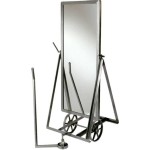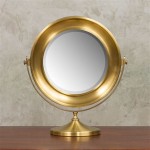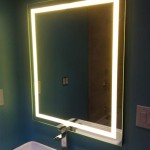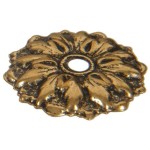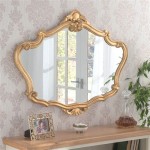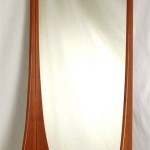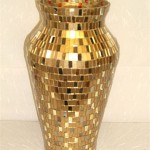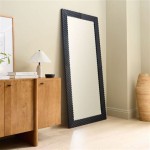Mercury Mirror Wall Tiles: A Reflective Choice for Interior Design
Mercury mirror wall tiles offer a unique and captivating way to enhance interior spaces. Their reflective surface adds depth and dimension, creating an illusion of expanded space while also amplifying natural and artificial light. This article explores the characteristics, applications, and considerations associated with incorporating mercury mirror wall tiles into design projects.
What are Mercury Mirror Wall Tiles?
Mercury mirror tiles are created through a process of applying a silvering solution, containing mercury compounds, to the back of a glass sheet. This silvering creates the reflective surface. Modern production methods have shifted away from actual mercury towards safer alternatives while retaining the distinctive "antique" look. The resulting tiles possess a slightly distressed, vintage aesthetic, different from the clarity of standard mirrors. This antique effect is characterized by subtle variations in reflectivity and patina, contributing to their unique charm.
Aesthetic and Design Considerations
The reflective properties of mercury mirror tiles make them a powerful tool for manipulating light and space. They can brighten dimly lit areas by bouncing light around the room, creating a sense of airiness. The aged, slightly mottled appearance adds a touch of vintage glamour and can complement various design styles, from classic to contemporary. However, the reflective nature can also be visually overwhelming if used excessively. Careful planning is crucial to achieve a balanced and harmonious aesthetic.
Application in Different Spaces
Mercury mirror tiles can be incorporated into a variety of interior settings. They are frequently used as backsplashes in kitchens and bathrooms, adding a touch of elegance and practicality. In living rooms or dining areas, they can be used as accent walls or incorporated into furniture pieces to create focal points. Smaller tiles can be used to create intricate mosaics or decorative patterns. Their versatility allows for creative integration into various design schemes.
Practical Benefits of Using Mercury Mirror Tiles
Beyond their aesthetic appeal, mercury mirror tiles offer some practical advantages. The reflective surface can help improve the brightness of a room, reducing the need for artificial lighting. The glass surface is relatively easy to clean and maintain, making it suitable for areas prone to spills or splashes. Furthermore, the tiles are durable and long-lasting, provided they are installed correctly and handled with care.
Installation and Maintenance of Mercury Mirror Tiles
Proper installation is crucial for maximizing the lifespan and aesthetic impact of mercury mirror tiles. A smooth, level surface is essential for proper adhesion and to prevent cracking. Specialized adhesives designed for mirror tiles should be used to ensure a secure bond. Regular cleaning with a non-abrasive glass cleaner will maintain their reflective quality and prevent the buildup of grime. Avoid using harsh chemicals or abrasive cleaners, as these can damage the mirrored surface.
Comparing Mercury Mirror Tiles with Alternatives
When considering reflective surfaces for interior design, several alternatives exist. Standard mirrors offer a clearer reflection but lack the vintage charm of mercury mirror tiles. Metallic tiles, like stainless steel or brass, provide a different aesthetic and can be more robust but might not offer the same light-enhancing properties. Acrylic mirror sheets are a lightweight and less expensive option, but they are more prone to scratching and may not provide the same level of reflectivity. The choice depends on the specific design goals and budget.
Cost and Availability of Mercury Mirror Tiles
The cost of mercury mirror tiles can vary depending on the size, thickness, and design. Generally, they are more expensive than standard glass tiles but less expensive than some specialty metallic tiles. They are widely available from tile suppliers, home improvement stores, and online retailers. When purchasing, it's essential to check the quality and ensure the tiles are free from defects or imperfections.
Design Tips for Incorporating Mercury Mirror Tiles
To effectively integrate mercury mirror tiles into a design scheme, consider the following tips. Use them sparingly to avoid an overwhelming effect. Combine them with other materials, such as natural stone or wood, to create a balanced aesthetic. Consider the lighting in the space, as the tiles will amplify both natural and artificial light. Experiment with different tile sizes and patterns to achieve the desired look. Consulting with an interior designer can provide valuable insights and ensure a cohesive and successful implementation.
Sustainability Aspects of Mercury Mirror Tile Production
While traditional methods involved mercury, modern manufacturing processes for achieving the "mercury glass" effect typically utilize safer silvering solutions. When choosing mercury mirror tiles, inquire about the manufacturer's production methods to ensure environmentally responsible practices. Furthermore, the durability and long lifespan of glass tiles contribute to their sustainability by reducing the need for frequent replacements. Recycling options for glass also exist, further mitigating environmental impact.

Rococo Mercury Glass Mirror Tile 15x30cm Co

Antique Mirror Tiles Backsplash Müller Designs

Antique Mirror Tiles Vintage Müller Designs

Antique Mirror Glass Wall Tiles

Mirror The Right Way To Use Mirrors In Your Home Bathroom Design Luxury Elegant Interior

Antique Mirror Tiles For Wall Müller Designs

Rococo Mirror Tile Tiles And Wallpaper

Merola Tile Re Beveled Antique Mirror 3 In X 6 Glass Wall 10 4 Sq Ft Case Wsdlsbam The Home Depot

Antique Mirror Tile A K1 12x12 Blow Out

Eglomise Glass Kitchen Http Www Thekitchendirectory Co Antique Mirror Backsplash

